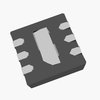-
The maximum input voltage that can be applied to the LTC3526 is 18V, but it's recommended to keep it below 15V for optimal performance and reliability.
-
To optimize inductor selection, consider the inductor's saturation current, DC resistance, and core loss. A good starting point is to choose an inductor with a saturation current at least 1.5 times the peak current, and a DC resistance less than 100mΩ. Also, consider using a shielded inductor to reduce EMI.
-
For optimal performance, keep the input and output capacitors close to the IC, and use a solid ground plane to reduce noise. Keep the high-current paths (e.g., from the input capacitor to the inductor) short and wide, and avoid routing sensitive signals near the inductor or switching nodes.
-
The output voltage of the LTC3526 can be adjusted by changing the resistive divider ratio of the feedback resistors (RFBT and RFB). Use the formula VOUT = 0.8V x (1 + RFB/RFBT) to calculate the desired resistor values.
-
The maximum ambient temperature range for the LTC3526 is -40°C to 125°C, but the device's performance and reliability may degrade at extreme temperatures. Ensure proper thermal design and heat sinking to maintain a safe operating temperature.
 LTC3526BEDC#TRMPBF datasheet
by Linear Technology
LTC3526BEDC#TRMPBF datasheet
by Linear Technology
